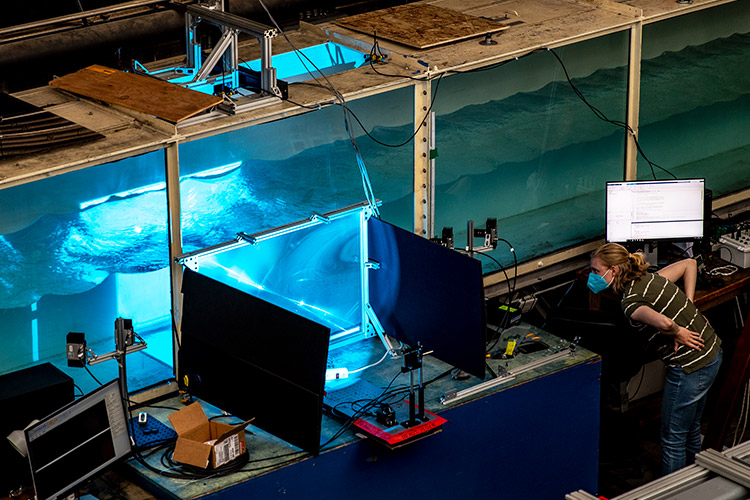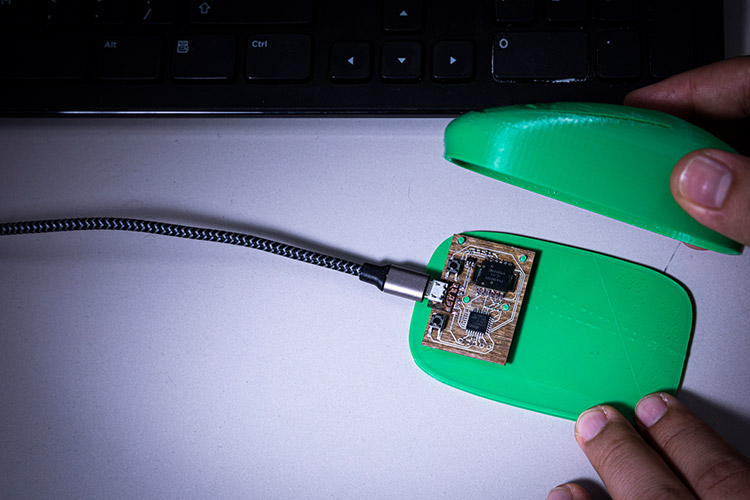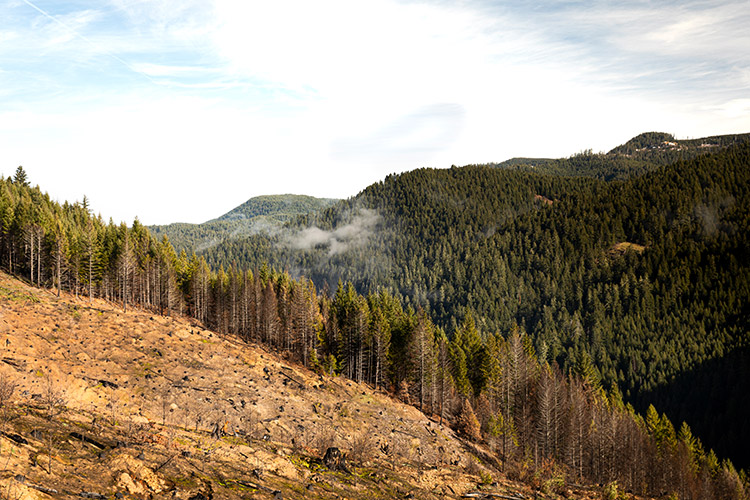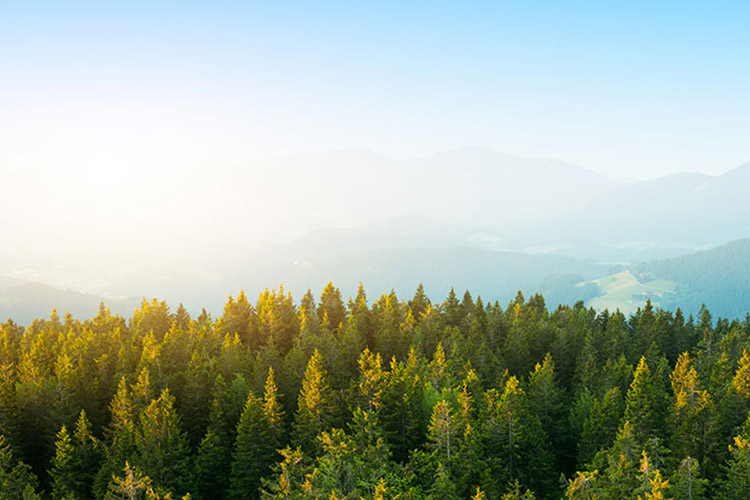Climate change adaptation and action
Learn how the UW Engineering community is addressing the climate crisis through research, teaching and collaboration.
Faculty, staff, students and alumni across the UW Engineering community are addressing the climate crisis through research, teaching and collaboration. Here we highlight some of their current activities. Join us in our commitment to engineering for the public good.
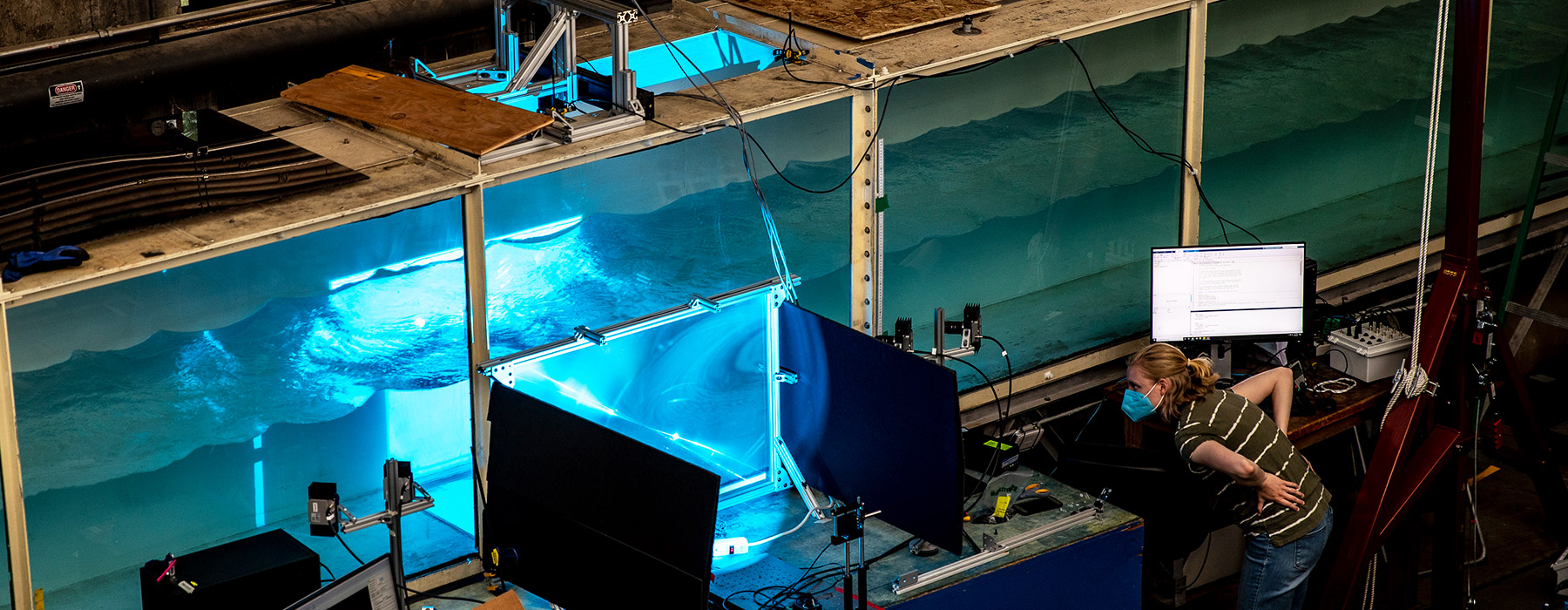
Postdoctoral researcher Luci Baker tracks the behavior of microplastics in the UW Harris Hydraulics Laboratory. Dennis Wise/University of Washington
Tracking how microplastics behave in the ocean
At the Washington Air Sea Interaction Research Facility, a wind-wave facility that simulates the ocean surface in the UW’s Harris Hydraulics Laboratory, researchers are tracking how microplastics — tiny pieces of plastic less than five millimeters long — behave over large distances in a turbulent environment.
Microplastics have been found not only in the bodies of water, including the Arctic Ocean, but inside animals, humans and tap water.
The goal is to better predict microplastics’ transport, distribution and degradation in the ocean. According to the researchers, understanding how the pieces move can inform the speed at which they break down and where they end up, which could provide insight about how to manage and mitigate plastic pollution in the ocean as well as where to remove it.
Plastic degrades slowly with sunlight, but it remains unknown how long it takes plastic to degrade in the ocean. Researchers do know that the depth and orientation of the tiny pieces can determine how much sunlight each object receives. To track the particles, Luci Baker, a postdoctoral researcher in mechanical engineering, images the particles’ shadows projected onto a wall of the wave tank, then tracks the shadows over long distances.
“The experiments will lead to tons of data,” says Baker. “We’ll be able to track particles’ position and orientation through space, and the depth and concentration. That’s the fun part.”
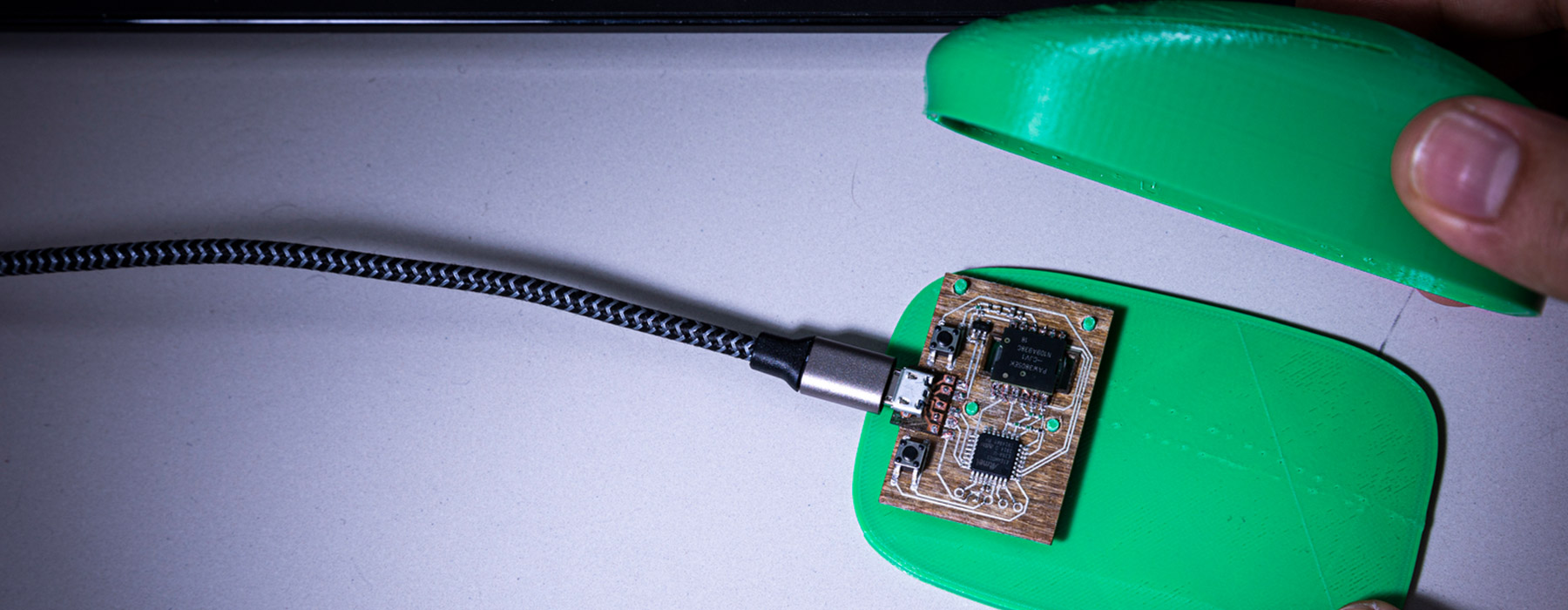
A prototype sustainable mouse developed by Vikram Iyer’s team and collaborators at Microsoft Research, with the cover removed to show the biodegradable circuit board within. Mark Stone/University of Washington
Making Earth-friendly electronics
The components that make electronics fast and easy to use also make their disposal an environmental nightmare. Components of smartphones, computers and even kitchen appliances contain heavy metals and other compounds that are toxic to us and harmful to ecosystems.
In 2019, people generated more than
50 million
metric tons of e-waste
As electronics become cheaper to buy, e-waste has piled up. A 2019 report from the World Economic Forum called e-waste “the fastest-growing waste stream in the world” — and for good reason. That same year, people generated more than 50 million metric tons of e-waste, according to the U.N.’s Global E-waste Monitor. Much of it is incinerated, piled up in landfills or exported to lower-income countries where it creates public health and environmental hazards.
UW researchers are exploring ways to make electronics more Earth-friendly. Vikram Iyer, an assistant professor in the Paul G. Allen School of Computer Science & Engineering and researcher in the UW Institute for Nano-engineered Systems, has recently presented a functional computer mouse with a biodegradable case and circuit board. Aniruddh Vashisth, an assistant professor of mechanical engineering, is developing synthetic materials that — unlike plastics — can be recycled and reused indefinitely. And Eleftheria Roumeli, an assistant professor of materials science and engineering and researcher in the Molecular Engineering & Sciences Institute, uses biological materials, such as seaweeds and other algae, to develop alternatives to plastics that can be 3D-printed.
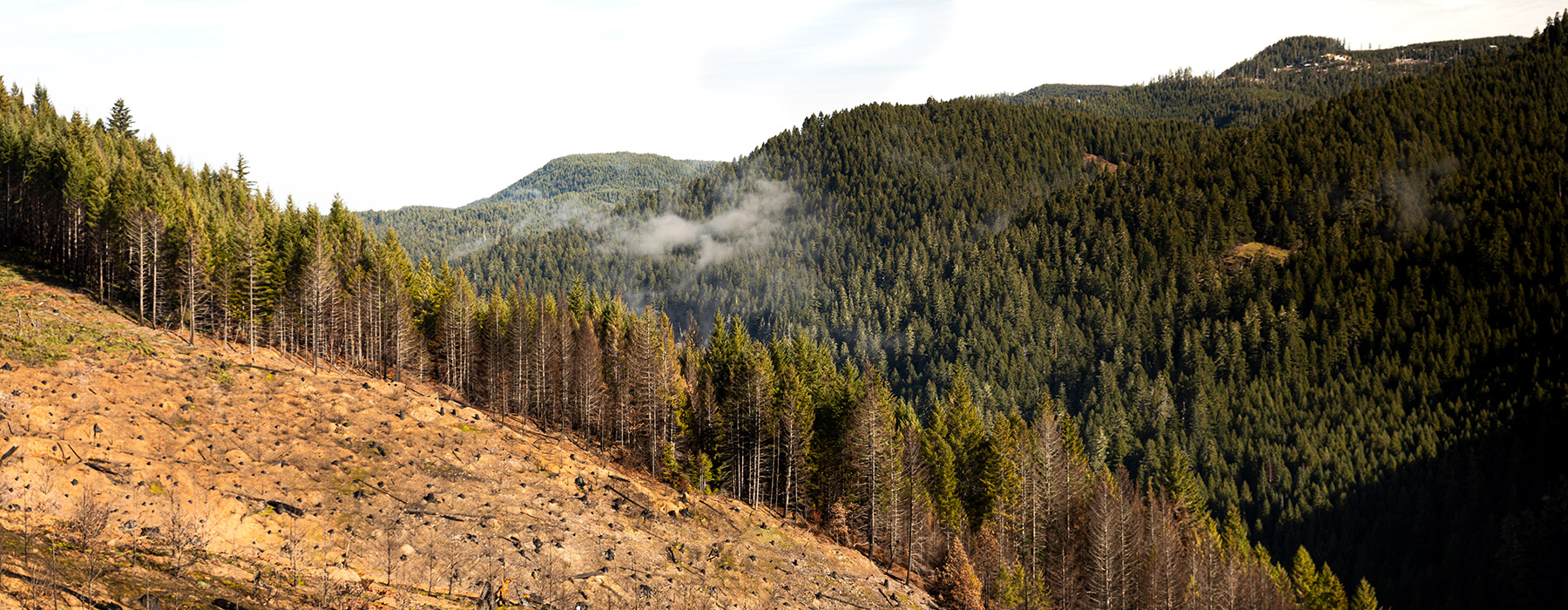
Area near Bogus Creek in southern Oregon, which was devastated by the Umpqua National Forest fire in the summer of 2021. Mark Stone/University of Washington
Computing for the environment
Computing for the Environment (CS4Env) brings together UW civil and environmental scientists and engineers with computer scientists and engineers and data scientists to accelerate research addressing climate change, pollution, biodiversity and more. The cross-disciplinary research teams are applying technologies and tools — including deep learning, data visualization, software engineering and machine learning — to address topics ranging from air quality and wildlife conservation to wildfires and landslide risk.
CS4Env launched this summer with 12 inaugural projects and under the direction of Vikram Iyer, an assistant professor in the Paul G. Allen School of Computer Science & Engineering; Dorothy Reed, a professor of civil and environmental engineering (CEE), and Alex Turner, an assistant professor of atmospheric sciences.
“Research to slow down the impacts of climate change requires a multidisciplinary approach involving a lot of data collection and analysis,” Reed says. “For example, some of us in CEE have lots of domain expertise but face challenges in collecting and processing huge datasets.”
“One of the aims of CS4Env is to provide a platform that brings together researchers with expertise that allow us to tackle big interdisciplinary problems in the environment,” Turner adds.
The initiative provides seed funds for research teams to explore new projects, positioning the teams to be competitive for future funding opportunities. This year, it will also host regular meetings and presentations.
“We hope our events can serve as a venue for community discussions of research tools and challenges in the field, code reviews, tutorials, workshops and more,” Iyer says.
Continue exploring
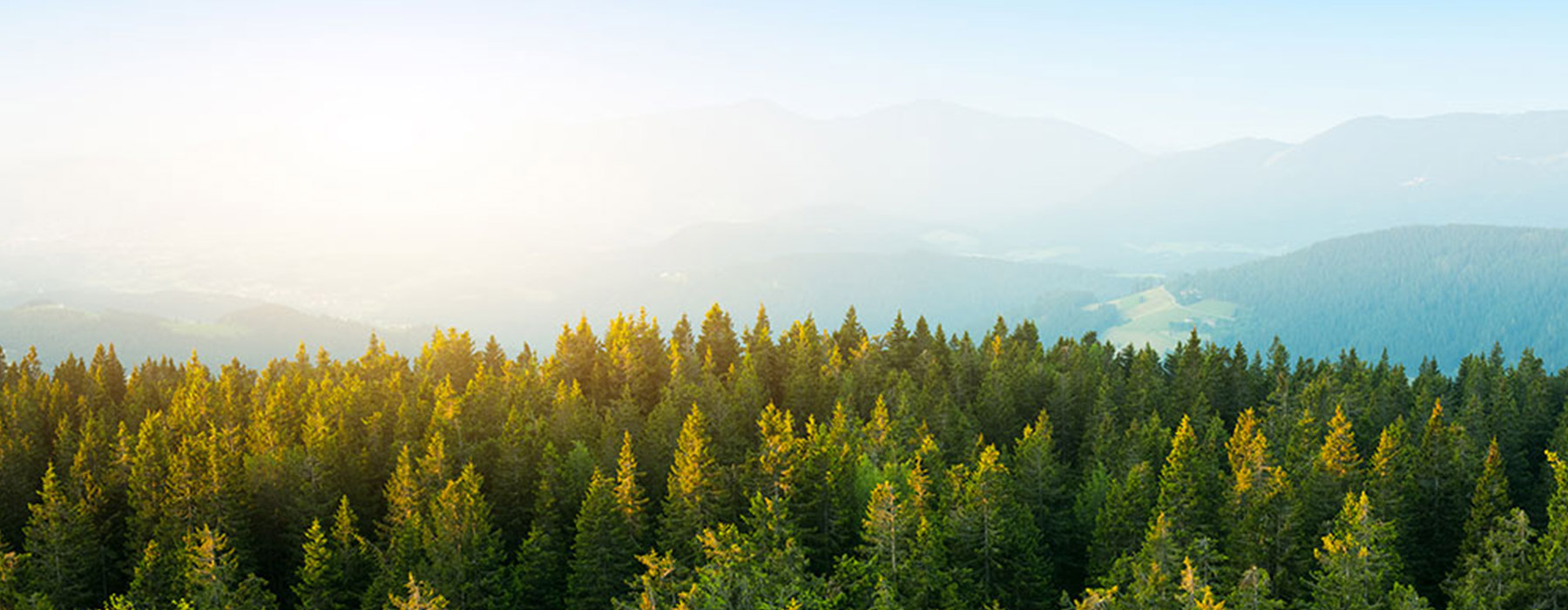
Countering climate change
The concept of climate change may not be new, but the team at the nonprofit research organization CarbonPlan has a new approach to help inform both carbon removal and climate solutions.
Co-founded by civil and environmental engineering alumnus Joe Hamman, Ph.D. ’16, the team at CarbonPlan is presenting the best available science and data in unique ways to public and private stakeholders.
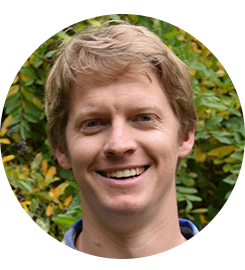
“Over the next decade, we need to go from a carbon-intensive economy to a carbon-free economy. There are a lot of new ideas coming into the space, but not a lot of outside perspective that puts some bounds of realism around what will work and what won’t. That’s why we stepped in.”
One of CarbonPlan’s hallmarks is utilizing “open science” to help move conversations forward in the climate solutions arena. The term open science refers to a collaborative approach to science that entails creating reusable and shareable tools, such as interactive models, visualizations and datasets. The merging of both open science and climate policy in one place is unique, says Hamman.
“There are not many organizations doing these things in tandem,” he says. “My motivation was thinking about how open science could be used to accelerate actual action we can take to stave off the worst of climate change.”

Ecological collaboration through human-centered design
“I think human-centered design and engineering is an avenue to investigate across time: the past, present, and possible futures of ecology and the environment. With HCDE we can design for today’s solutions and impacts, while also considering downstream effects,” says Human Centered Design & Engineering (HCDE) Associate Professor David Ribes.
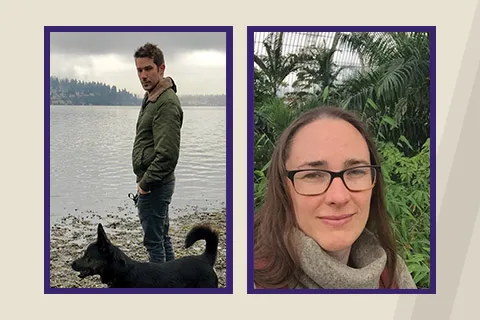
At the UW, Ribes collaborates with HCDE Research Scientist Shana Hirsh in the Data Ecologies Lab, where they use human-centered design to explore the intersection of the environment, science and technology. By applying data science and digital ethnographic methods, they explore how collaborations function and adapt to changing norms.
“Understanding human values is another thing HCDE brings to this area,” Hirsch adds. “Human values are often not considered by scientists or other engineering disciplines, so human-centered design brings an opportunity to uncover some of those values and understand what’s going to be important for the future.”
Continue reading to learn more about Ribes and Hirsch’s partnership and why they believe HCDE is critical to developing solutions to the toughest environmental challenges.
Engineering excellence for the public good
The College of Engineering is committed to engineering for the public good. Learn more about how we are creating a healthier and more just world through our work.
